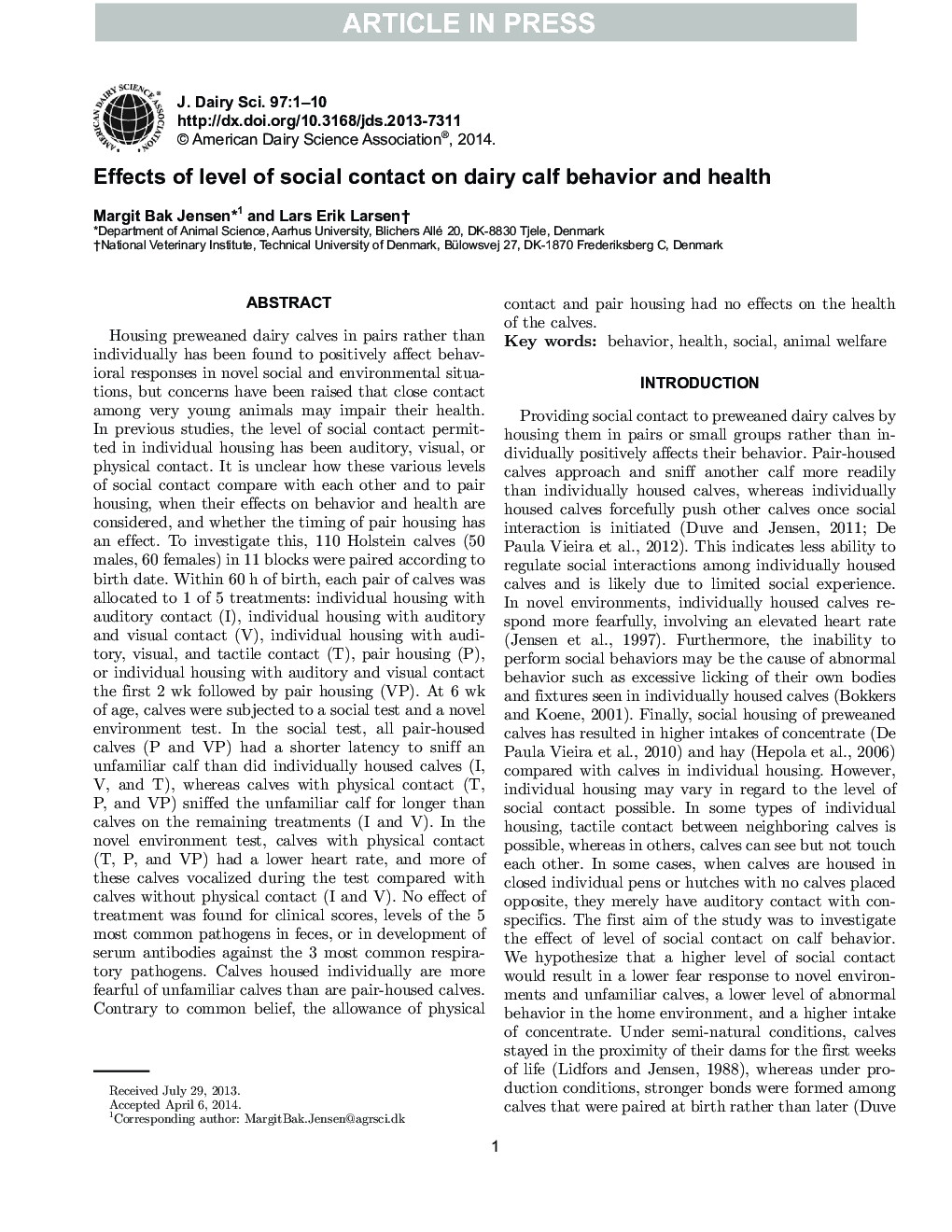| کد مقاله | کد نشریه | سال انتشار | مقاله انگلیسی | نسخه تمام متن |
|---|---|---|---|---|
| 10974661 | 1108027 | 2014 | 10 صفحه PDF | دانلود رایگان |
عنوان انگلیسی مقاله ISI
Effects of level of social contact on dairy calf behavior and health
ترجمه فارسی عنوان
تأثیر سطح تماس اجتماعی در رفتار گوساله های لبنی و سلامت
دانلود مقاله + سفارش ترجمه
دانلود مقاله ISI انگلیسی
رایگان برای ایرانیان
کلمات کلیدی
رفتار - اخلاق، سلامتی، اجتماعی، رفاه حیوانات،
موضوعات مرتبط
علوم زیستی و بیوفناوری
علوم کشاورزی و بیولوژیک
علوم دامی و جانورشناسی
چکیده انگلیسی
Housing preweaned dairy calves in pairs rather than individually has been found to positively affect behavioral responses in novel social and environmental situations, but concerns have been raised that close contact among very young animals may impair their health. In previous studies, the level of social contact permitted in individual housing has been auditory, visual, or physical contact. It is unclear how these various levels of social contact compare with each other and to pair housing, when their effects on behavior and health are considered, and whether the timing of pair housing has an effect. To investigate this, 110 Holstein calves (50 males, 60 females) in 11 blocks were paired according to birth date. Within 60Â h of birth, each pair of calves was allocated to 1 of 5 treatments: individual housing with auditory contact (I), individual housing with auditory and visual contact (V), individual housing with auditory, visual, and tactile contact (T), pair housing (P), or individual housing with auditory and visual contact the first 2Â wk followed by pair housing (VP). At 6Â wk of age, calves were subjected to a social test and a novel environment test. In the social test, all pair-housed calves (P and VP) had a shorter latency to sniff an unfamiliar calf than did individually housed calves (I, V, and T), whereas calves with physical contact (T, P, and VP) sniffed the unfamiliar calf for longer than calves on the remaining treatments (I and V). In the novel environment test, calves with physical contact (T, P, and VP) had a lower heart rate, and more of these calves vocalized during the test compared with calves without physical contact (I and V). No effect of treatment was found for clinical scores, levels of the 5 most common pathogens in feces, or in development of serum antibodies against the 3 most common respiratory pathogens. Calves housed individually are more fearful of unfamiliar calves than are pair-housed calves. Contrary to common belief, the allowance of physical contact and pair housing had no effects on the health of the calves.
ناشر
Database: Elsevier - ScienceDirect (ساینس دایرکت)
Journal: Journal of Dairy Science - Volume 97, Issue 8, August 2014, Pages 5035-5044
Journal: Journal of Dairy Science - Volume 97, Issue 8, August 2014, Pages 5035-5044
نویسندگان
Margit Bak Jensen, Lars Erik Larsen,
